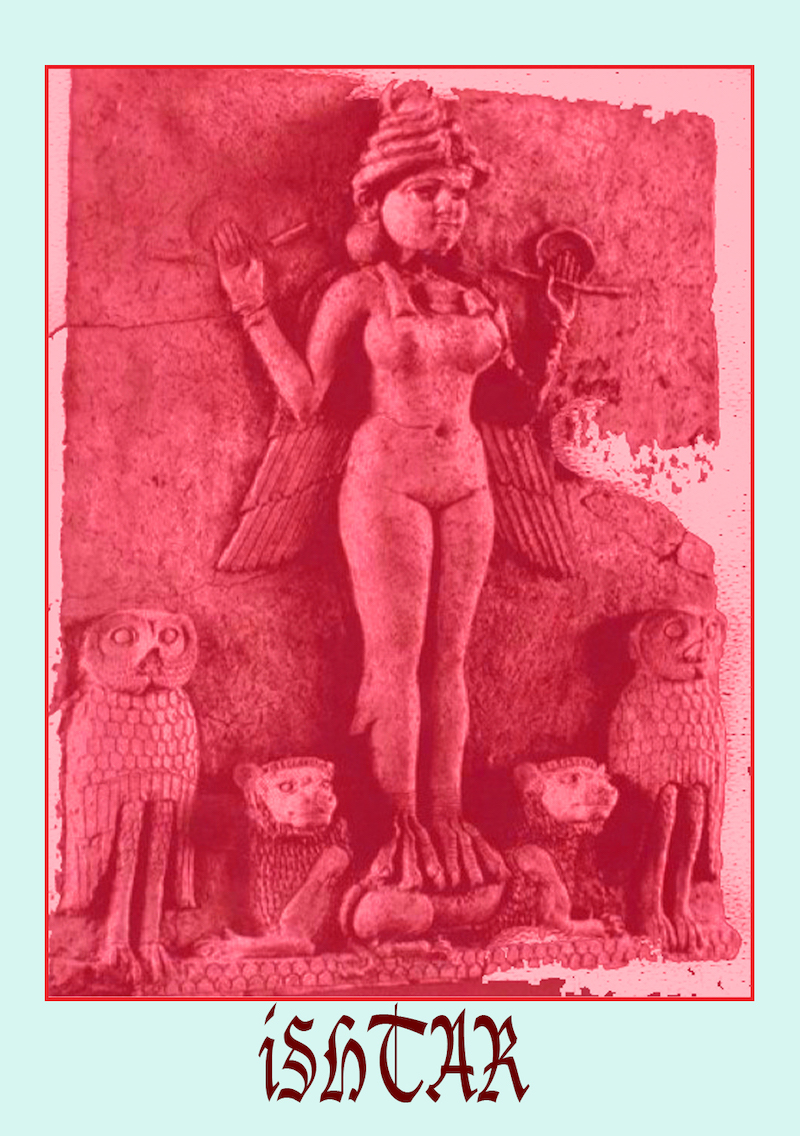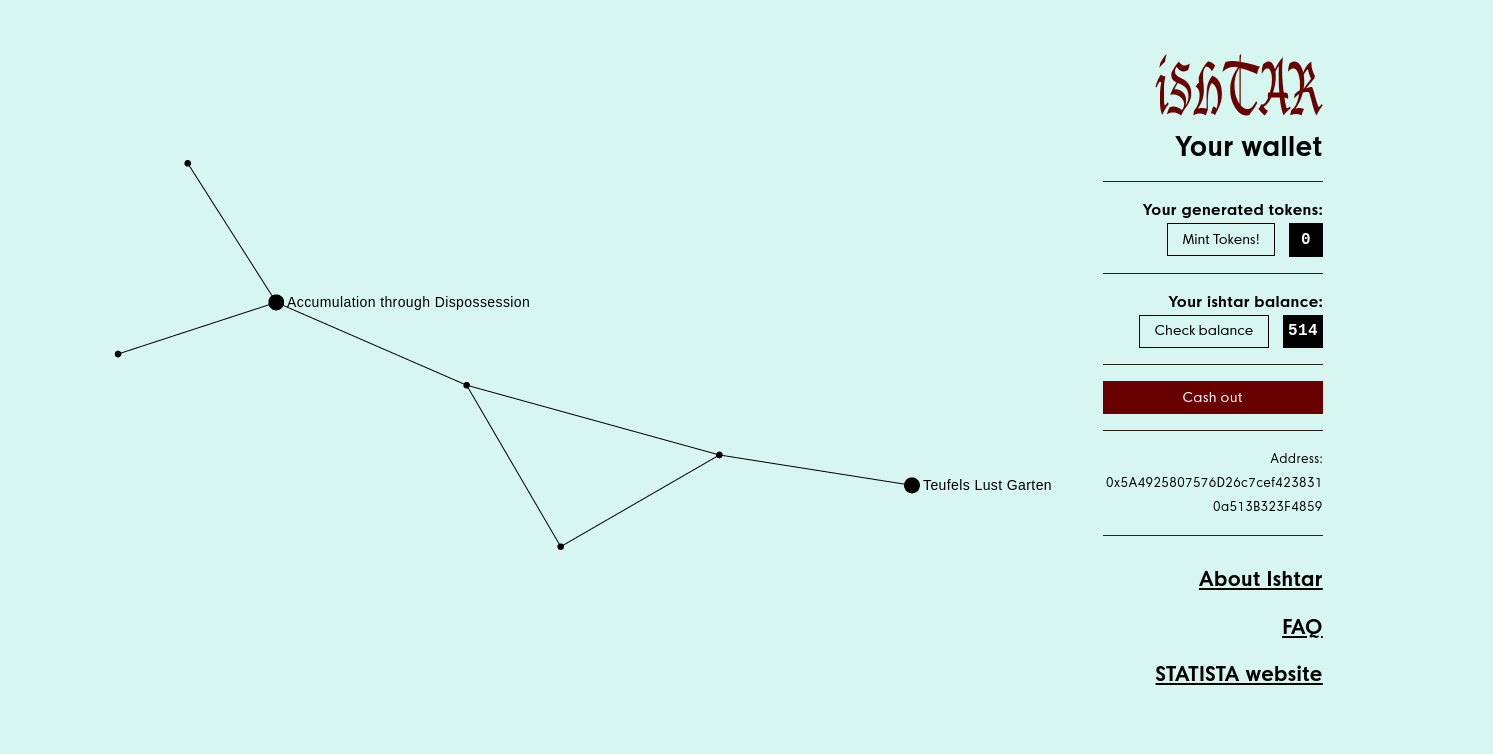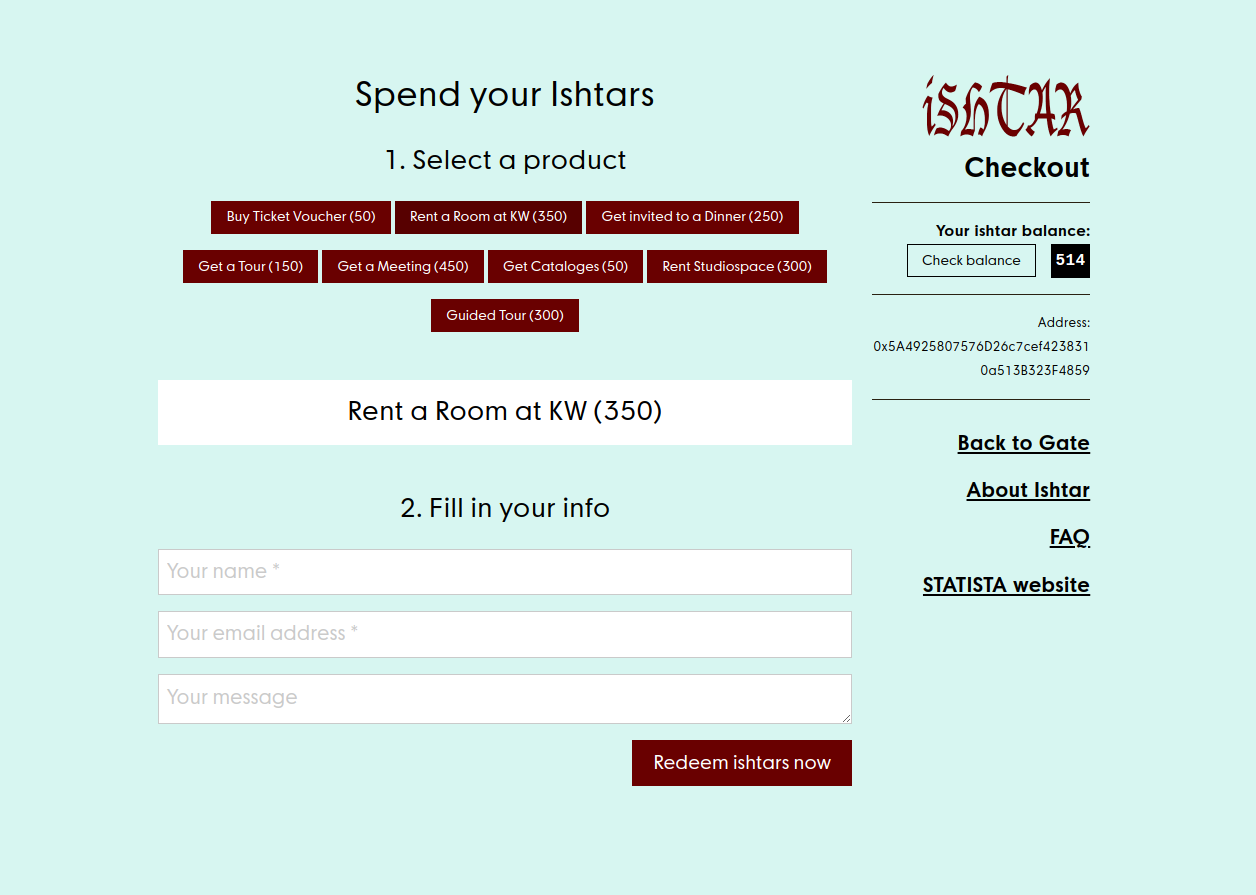Article by Emily McDermott // Sept. 05, 2019
Since 2016 the Haus der Statistik, a previously empty architectural icon at Alexander Platz, has been hosting an eponymous initiative formed by alliance of various Berlin residents in opposition to gentrification. From its beginnings, the community-oriented platform has hosted an array of public meetings and events, one of which is currently STATISTA. With ten artistic propositions, this eight-month long project explores whether or not working in the spirit of the Commons is a viable option within our current world structures. It asks—and proposes alternative solutions to—questions such as: How can city development be planned in a way that is beneficial to all? In what ways can urban sites be consciously renewed, rather than gentrified?
Coming up during Berlin Art Week is the STATISTA Conference, which includes working sessions, talks and presentations that are open and free of charge to the general public. One project to be presented and launched is Ishtar Gate, a new digital platform that invites radical change to the way we write, regard, interact with and distribute art criticism, as well as the way such cultural producers are rewarded. In May, critic and theorist Penny Rafferty began publishing an ongoing series of critical commentary on Ishtar Gate, where, in an effort to build a sense of collective authorship, readers are encouraged to also add their own comments on and build links between Rafferty’s thoughts. In exchange for their time reading and/or contributing thoughts, users (whose names remain unknown; no registration is necessary) are rewarded with tokens, a kind of digital currency known as Ishtar. To begin, Ishtar will be accepted by KW in exchange for studio visits, gallery space, tickets to the institution, exhibition catalogues, gallery dinners and more. Over the course of time, Rafferty and Nascent—an “exit tech production studio” with whom she collaborated to build the platform and currency—aim to establish new partnerships, allowing Ishtar to create a micro-economy that encourages and rewards passive reflection as well as active engagement.
Prior to Ishtar and Ishtar Gate’s official launch on September 11th at the Werkstatt Haus der Statistik, Rafferty and Nascent’s Paul Seidler and Max Hamshire told us about the project’s beginnings and how Ishtar might be used to help transform criticism and its traditional hierarchical structures.

Emily McDermott: Ishtar and Ishtar Gate pertain to economic structures as well as art criticism, among other topics. What was the starting point for this project, how did you first come up with the idea?
Penny Rafferty: It all started when Tirdad Zolghadr, the curator of STATISTA, asked me to come onboard as what he termed a “sputnik position,” which is someone who culturally audits from the inside out. This immediately struck me as a role that is rarely exercised but absolutely necessary. In brief, it’s someone who sits on the sidelines observing and commenting at arm’s length, rather than someone who is embroiled in the rapture of the creation of the project. This meant I could watch how a project like STATISTA comes together and hear both artistic and design developments/limitations as opposed to just being offered the final landscape. I also often got to play devil’s advocate privately, which seemed really meaningful for both the curators and artists I came into contact with, yet it soon became obvious that my voice, although professionalized, is perhaps out of touch from the immediate audience that STATISTA was built for, and hence I came up with the idea we needed to broker my in-house criticism with other voices. This became possible when I started working with Nascent and we created the model Ishtar Gate, which would not only offer a community of critical voices but also allow them to earn Ishtar for their time spent reading, commenting and scrolling—a payback scheme that would feed straight back into the system of the local Berlin art sphere.
Paul Seidler: We got involved in the programming component, but for quite some time Max and I have been interested in investigating economic and social questions with the help of prototyping minimal, viable crypto-economic systems. With Nascent we have formalized the practice of experimenting with these economic systems and advise different actors on building or integrating these in already existing solutions. When Penny approached us with the idea of incentivizing critique and building a more passive approach to what might be generally known as “attention economy,” we recognized that it fit pretty well into questions we were also interested in.
Max Hampshire: Ishtar Gate, in particular, was an interesting opportunity to experiment with this “minimal viable” form. We were trying as much as possible to remove the cognitive overhead associated with getting people to interact with crypto-economic projects or experiments—basically allowing for the “crypto” aspect of it to become passive and merely enable this little micro-economy, instead of it being at the fore in terms of attention/cognitive effort, as well as conceptually. We didn’t want this to turn into another project about a token; we wanted to have the token enable this economy that accounts for “passivity” in the same way other platforms account for activity in the form of commenting, liking, retweeting, etc.
PR: In a way, the whole project is a multi-layered platform looking at not only the question of economy and resources in Berlin as Paul said, but also what it means to be critical and how being engaged should be rewarded. So we tried to create a system where simple engagement is equal to typed characters which then leads back into the system.

EM: I’m also curious about the name of the platform and currency. Ishtar is the name of a Mesopotamian goddess, while the Ishtar Gate was the eighth gate to the inner city of Babylon. The reconstruction of the gate can even be seen in Berlin at the Pergamon Museum. Why did you choose these names and what do they mean to you in relation to this project?
PR: Starting from the beginning, for the last year I have been working with Max and Paul, but also Calum Bowden, Catrin Mayer and more recently Chloe Stead, who has been weighing in on the state of Berlin as a city that offers support to artists emerging in the field. In light of these conversations, we have begun to build a decentralized autonomous community model called Black Swan. Alongside these meetings and musings, I have also been part of multiple conversations about the decline of criticism and what it means to constantly be compromised not only as a writer but also as a cultural worker, and this is where Ishtar comes in: She is the goddess of fertility and war, and what has become glaringly obvious is that this duality of destruction and growth is often seen as unsavory behavior in the cultural sphere due to its disruptive quality. I think the only way to really continue within contemporary art is to celebrate this virtue, let chaos reign, and reorganize what has become an extremely interesting art hybrid locked inside an increasingly polarizing and conservative art world. Art is not what it used to be, but we still assume the systems that were created for it are relevant. It is pure delirium and it’s killing the potential of art today.
PS: In relation to the Gate, perhaps we’ll stick to the picture of it: Even in microelectronics, the logic gate exists as a simple component of a larger circuit that can perform logical operations on an applied signal. It can be used, for example, to integrate this signal into another circuit; that is, to make it accessible in a different context. In the best case, Ishtar could function as a logic gate of an institution. It could open a closed circuit of art and theory production to the outside: The trolls, the anime avatar Twitter accounts, and obviously everyone else. This position appears as pretty dangerous, and it is to a certain degree. As KW will actually grant its resources to users of the platform, who don’t have to register to use, Ishtar appears as a radical open system more akin to a 90s image-board than to the usual well-moderated platforms.
EM: How do you view Ishtar and Ishtar Gate within the overarching framework of the STATISTA, which defines itself as something that tests “whether working in the spirit of Commons is an option today even within the context of city development”?
PR: A friend asked me yesterday if I believe we have even scratched the surface of what art can be. I hope we haven’t, and with that same optimism I think Ishtar is trying to grind its claws a little deeper and so is STATISTA. They are both very vulnerable because they are the first of their kind, but I have started to notice a readiness in peoples’ minds to consider change. STATISTA and Ishtar will both undoubtedly make mistakes but unless we start them, we will never know their power or what their capacity may be. It’s important to state that I don’t think the first iteration of Ishtar will solve the multiple problems I’ve attested to, but it may provide some insight beyond mere speculation and the modus of bitching rather than action.
PS: This reminds me of a sentence by Andrej Škufca which I read and think about a lot: “Now art joins the operations of greatest importance, it no longer solely interprets them.” The question as to how far artistic experiments can shift the focus of art and theory production and, for example, help in the development of alternative infrastructure, is for me inherent in the conception of the STATISTA project. For me, it also describes a different modus operandi: Building instead of interpreting.

EM: That being said, Ishtar and Ishtar Gate are one of STATISTA’s ten “artistic prototypes for a civil society built on collective principles”. How do you see your project as such a prototype?
PR: Ishtar is, in a way, a social-cultural feedback system—a collective mouth that, if it works, could provide a lot to harvest from to create a better system in the arts. Ishtar sits perfectly inside its current climate chamber: we are, after all, one part of a toolkit which includes procedures like cancel culture or direct digital action, which has led to the resignation of Yana Peel from the Serpentine and Warren B. Kanders from the Whitney, among many other feats which all naturally feed into the climate of the digital feedback. However, I see these tools coming more from a macro-level of engagement, and what we are doing is trying to create a micro-community space of reflection that feeds into itself rather than trying to scale-up and save the world.
MH: Also, it’s a micro-space of engagement, but not a nostalgia trip. Paul alluded to the potential for the project to get a bit chaotic when he referred to the spirit of image-boards populated by avatars (which is going to be interesting in that we don’t want to directly moderate the content of the site, and we want to reduce “identity” to just the crypto wallet and posts); I think that element is an aspect of early internet culture that we should try to retain and allow to grow without having this engagement feed hell threads on Twitter and be understood solely through the number of times people engage with it. “Earning” via activities that don’t add to a sort of collective scoreboard for each post/comment will hopefully redirect the focus of engagement back onto the individual. It sounds counterintuitive initially, but by incentivizing and rewarding reflection, hopefully people will be able to more genuinely engage overall.
EM: So how do you envision this project and its effects in the long-term?
PR: Hopefully in the long term the project has the potential to be seen as an extremely informative tool of feedback and criticism and opens up to other potential creative spaces and engagement from its users via its rewards.
One thing I hope but will not know this until it is set in motion is that it has the potential to change the way we look at voicing ideas, concerns and criticism by breaking down traditional hierarchical structures of who gets to speak and who gets rewarded for it. In the same vein, I hope it opens up further projects that reject traditional art world conventions in favor of a system that works for its users rather than harvesting them. I am always an extreme optimist though…
PS: This might sound a bit far-fetched, but I like to hope, in the long term, projects that experiment with rewarding critique and feedback and providing micro-economic systems for participation could kick start actual communities and blur the lines of institutions towards cooperatives and more fluid communities.
MH: Picking up and running with the points that Penny and Paul just laid out, I hope that (aside from the project showing that you can successfully break away—to whatever extent or scope—from the sort of models we currently operate within, regarding which voices are valued and how this value is represented) the root ideas of the project cross-pollinate and develop within, or infect, other communities which are experimenting with different structural arrangements. Experimenting with hierarchical fluidity and/or different forms of value creation within micro-communities are some of the most vital ways of engaging with others right now, so any way in which Ishtar Gate catalyzes those efforts is a positive effect long-term.
Event Info
HAUS DER STATISTIK
Penny Rafferty, Nascent: ‘Ishtar’
Presentation & Conversation with Penny Rafferty, Nascent and guests Simon Denny and Harm Van den Dorpel
Wednesday, Sept. 11, 2019; 8:15-9pm
Werkstatt, Karl-Marx-Allee 1, Berlin, click here for map


























